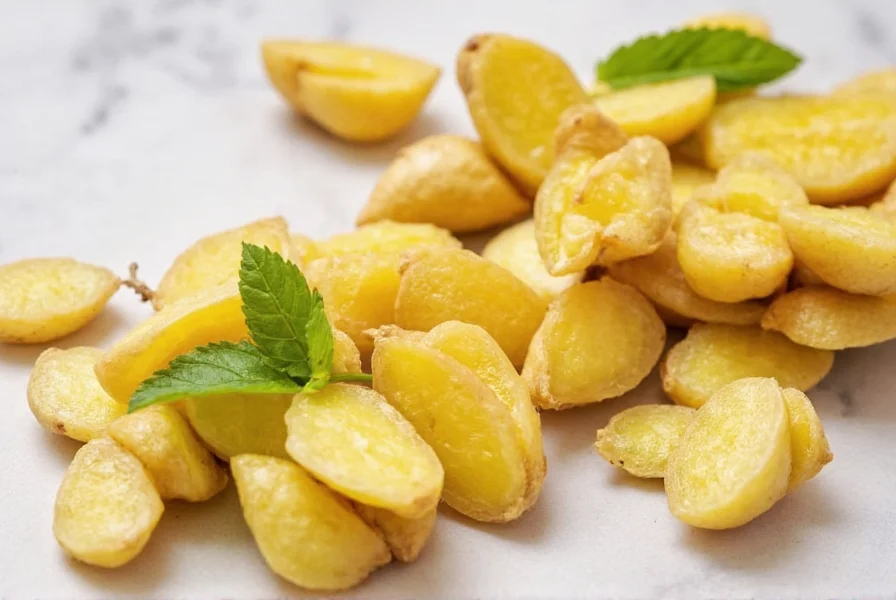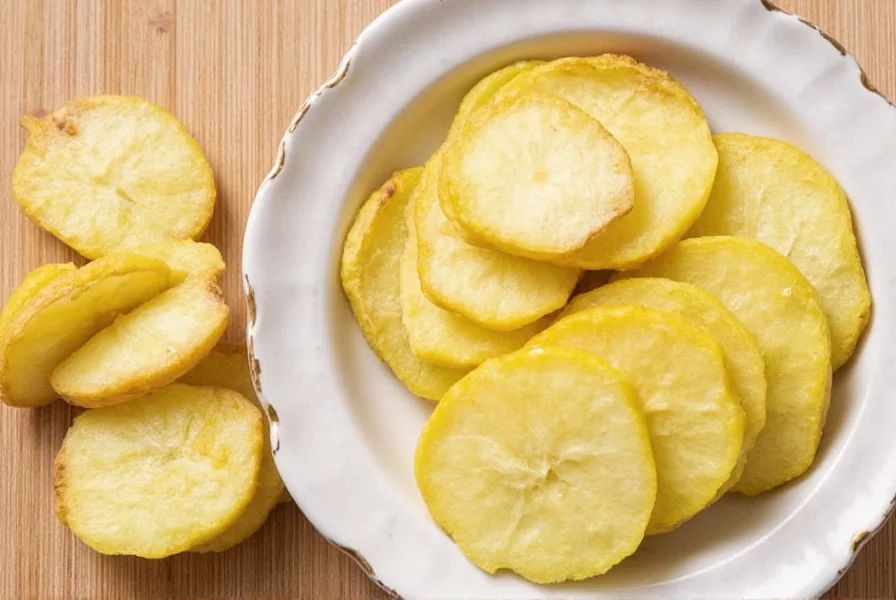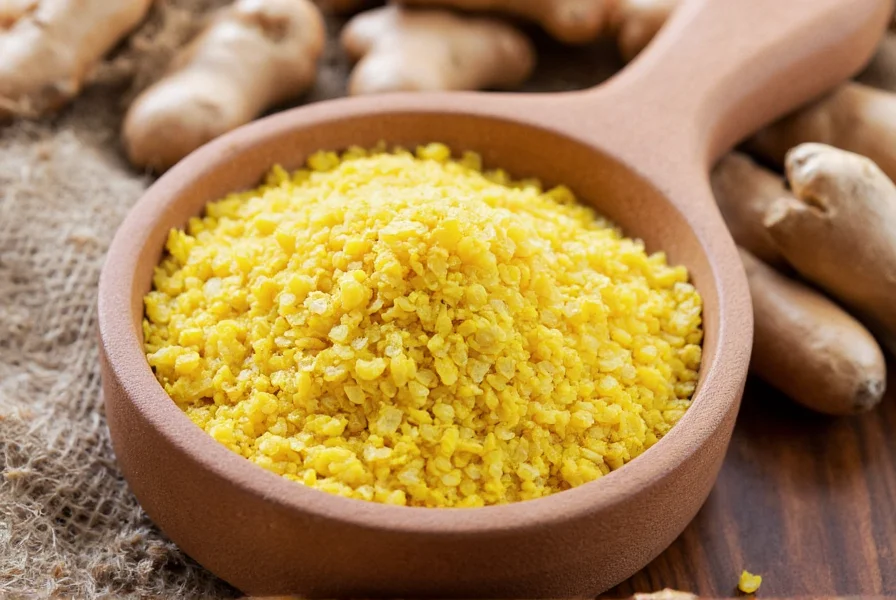Many home cooks and health-conscious individuals search for ginger alternatives for various reasons. Whether you're out of fresh ginger, have an allergy, need a milder option, or seek similar health benefits, understanding proper substitutes ensures your recipes maintain their intended flavor profile and functional properties.
Why People Seek Ginger Alternatives
Ginger's unique combination of spicy, warm, and slightly sweet flavor makes it challenging to replace. However, common reasons for seeking alternatives include:
- Unavailability of fresh ginger in local markets
- Allergic reactions or sensitivities to ginger
- Medication interactions (ginger can interact with blood thinners)
- Preference for milder flavors in certain dishes
- Need for similar health benefits without ginger's distinctive taste
- Experimenting with new flavor profiles in cooking
Top Ginger Substitutes for Culinary Applications
Choosing the right ginger alternative requires understanding both flavor profiles and functional properties in cooking. Here's a detailed comparison of the most effective substitutes:
| Alternative | Flavor Profile | Best Used In | Substitution Ratio | Special Considerations |
|---|---|---|---|---|
| Galangal | Sharper, more pungent, less sweet | Thai and Indonesian cuisine | 1:1 fresh to fresh | Harder texture, requires finer grating |
| Turmeric | Earthy, less spicy, slightly bitter | Curries, rice dishes, golden milk | 1/2 tsp powder per 1 tbsp fresh ginger | Add black pepper to enhance absorption |
| Allspice | Warm, combines cinnamon, nutmeg, clove notes | Baking, spice rubs, jerk seasoning | 1/4 tsp per 1 tbsp fresh ginger | Lacks ginger's heat but provides warmth |
| Cardamom | Sweet, floral, citrusy notes | Baking, chai tea, Scandinavian pastries | 1/4 tsp per 1 tbsp fresh ginger | Best for sweet applications |
| Mace | Milder, more delicate than nutmeg | Custards, light sauces, baked goods | 1/8 tsp per 1 tbsp fresh ginger | Use sparingly to avoid overpowering |
Ginger Alternatives for Specific Cooking Applications
For Asian Cuisine and Stir-Fries
When substituting ginger in Asian dishes, galangal remains the closest alternative, though it has a sharper, more medicinal flavor. For those seeking a more accessible option, a combination of 1/2 teaspoon ground white pepper and 1/4 teaspoon ground coriander can mimic ginger's heat without its distinctive flavor. This ginger replacement in recipes works particularly well when fresh options aren't available.

In Baking and Desserts
For ginger alternatives in baking, allspice provides the warm spice notes without overwhelming heat. When making gingerbread or spice cakes, use 1/4 teaspoon allspice for every tablespoon of fresh ginger called for in the recipe. Cardamom works exceptionally well in Scandinavian pastries as a non-spicy ginger alternative, offering floral notes that complement sweet applications beautifully.
For Beverages and Teas
When looking for ginger substitute for nausea relief in beverages, peppermint and chamomile serve as excellent alternatives. While they lack ginger's signature heat, both provide soothing properties for digestive issues. For a spicier alternative, consider using a small amount of cayenne pepper (1/16 teaspoon) in hot lemon water, which provides similar circulatory benefits without ginger's distinct flavor.
Medicinal Ginger Alternatives
Many people search for ginger alternatives specifically for their health benefits. While no single substitute replicates all of ginger's properties, different options address specific concerns:
- Nausea relief: Peppermint tea or candied lemon peel provide effective non-spicy ginger alternatives for motion sickness
- Inflammation reduction: Turmeric (with black pepper) offers similar anti-inflammatory properties
- Digestive aid: Fennel seeds or anise work well as milder alternatives to fresh ginger root
- Cold and flu symptoms: A blend of cinnamon, cloves, and honey mimics some of ginger's warming properties
How to Adjust Recipes When Substituting Ginger
Successful substitution requires more than simple ingredient swapping. Consider these practical tips when replacing ginger in your favorite dishes:
- For fresh ginger alternatives, adjust liquid content as some substitutes absorb more moisture
- When using dried spices as ginger replacement in recipes, remember they're more concentrated
- Acidic ingredients like lemon juice can help balance flavors when using milder alternatives
- Start with smaller amounts and taste as you go—most substitutes require less than ginger
- Consider adding a pinch of cayenne to turmeric for recipes needing ginger's heat
Common Mistakes to Avoid
Many home cooks make these errors when seeking ginger alternatives:
- Using equal amounts of dried spice for fresh ginger (dried is 3-4x more potent)
- Not considering color impact (turmeric will turn dishes yellow)
- Expecting identical flavor rather than complementary profiles
- Adding substitutes too early in cooking, causing flavor loss
- Ignoring the textural component that fresh ginger provides
Special Considerations for Dietary Restrictions
For those with specific dietary needs, these ginger alternatives work well:
- Low-FODMAP diets: Use small amounts of galangal or turmeric
- Blood thinner medications: Opt for cardamom or allspice instead of ginger substitute for nausea relief
- Kidney concerns: Avoid excessive turmeric which contains oxalates
- Pregnancy: Consult your healthcare provider before using any ginger alternatives
Creating Your Own Ginger Substitute Blends
For the most versatile ginger alternatives, create custom spice blends:
- Basic Ginger Substitute: 2 parts cinnamon, 1 part cardamom, 1/2 part cloves
- For Asian Dishes: 3 parts galangal powder, 1 part white pepper, 1/2 part coriander
- Mild Alternative: 2 parts allspice, 1 part nutmeg, pinch of cayenne
Store these blends in airtight containers for up to 3 months. These natural alternatives to ginger root provide consistent flavor when fresh ginger isn't available.

Frequently Asked Questions
What's the best ginger substitute for baking?
Allspice works best as a ginger replacement in baking, using 1/4 teaspoon for every tablespoon of fresh ginger. It provides the warm spice notes without overwhelming heat. For gingerbread specifically, a combination of allspice and a small amount of black pepper creates the closest flavor profile to traditional gingerbread.
Can I use turmeric instead of ginger for nausea?
While turmeric has anti-inflammatory properties, it's not as effective as ginger for nausea relief. For a better ginger substitute for nausea relief, try peppermint tea or candied lemon peel. If you prefer using turmeric, combine it with a small amount of cayenne pepper and lemon for more effective digestive relief.
How do I substitute dried ginger for fresh?
Use 1/4 teaspoon of ground ginger for every tablespoon of fresh ginger called for in a recipe. Remember that dried ginger has a more concentrated, slightly different flavor profile. For the most accurate ginger replacement in recipes, add the dried spice later in the cooking process to preserve its flavor.
What's a good non-spicy ginger alternative?
Cardamom serves as an excellent non-spicy ginger alternative, particularly in sweet applications. For savory dishes, a combination of coriander and white pepper provides similar warmth without intense heat. These natural alternatives to ginger root work well for those sensitive to spicy flavors while maintaining complex flavor profiles in your dishes.
Can I use galangal instead of ginger in all recipes?
Galangal works well as a ginger alternative in Southeast Asian cuisine but isn't suitable for all recipes. It has a sharper, more medicinal flavor and harder texture than ginger. When using galangal as a ginger replacement in recipes, use equal amounts but grate it finely. Avoid substituting in sweet applications like gingerbread, where its flavor profile doesn't complement other ingredients.











 浙公网安备
33010002000092号
浙公网安备
33010002000092号 浙B2-20120091-4
浙B2-20120091-4